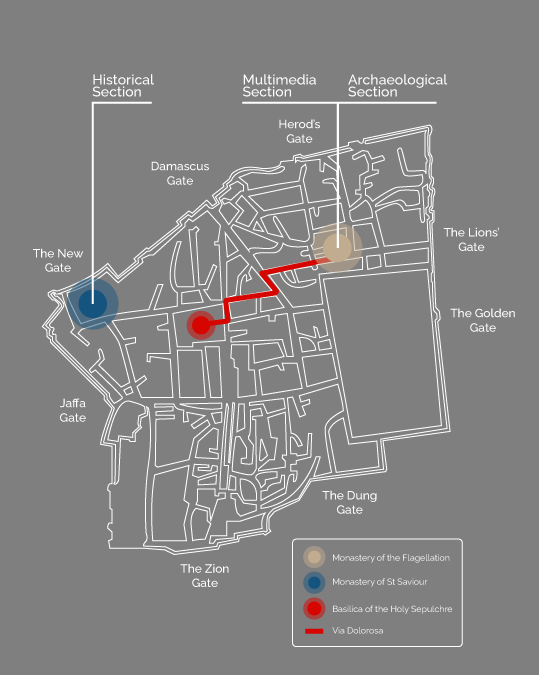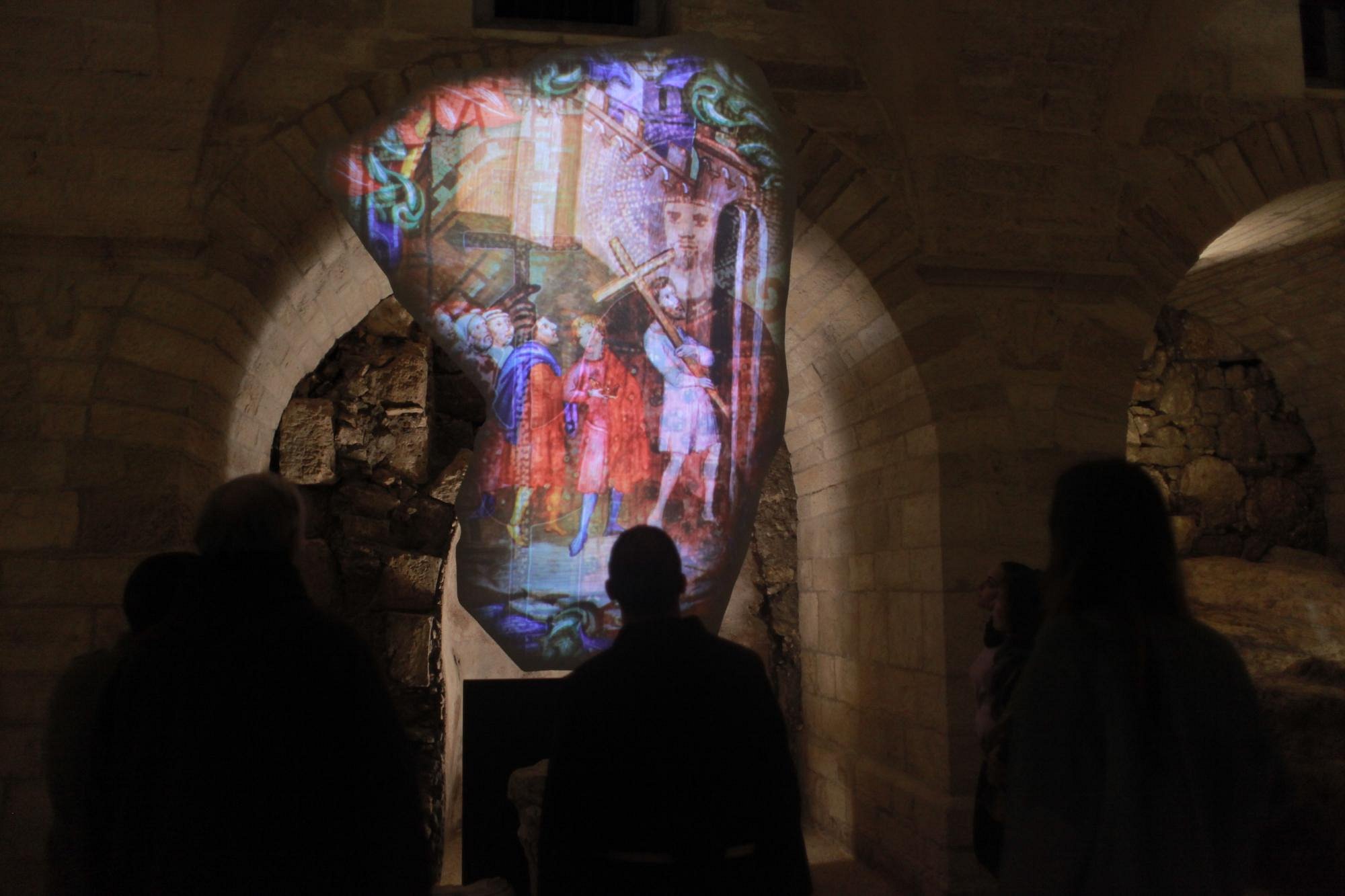



The Terra Sancta Museum, located in the heart of the Old City of Jerusalem, preserves and promotes the archaeological and artistic heritage of Christianity—a treasure safeguarded by the Franciscans of the Custody of the Holy Land for over 800 years. The museum project is divided into three sections: the multimedia and archaeological sections, located in the Monastery of the Flagellation on the Via Dolorosa, are already partially open to visitors. The historical section, set to open in the Monastery of St. Savior between 2025 and 2026, will showcase donations made over the centuries by the Royal Courts of Europe.
The museum's mission is rooted in the long-standing Franciscan tradition of protecting the Holy Places and supporting the Christian communities of the Holy Land. Its objectives include promoting the historical significance of the Christian presence in the Holy Land and the universality of Jerusalem, offering a new cultural experience that contributes to the development of the Old City's economic and social framework, creating a space for Christian culture alongside existing museums dedicated to Judaism and Islamic art, and participating in the education and empowerment of local actors in preserving a rich historical and artistic heritage.
Relive the history of the Holy City
In 15 minutes, visitors experience more than 2000 years of history as episodes from the Gospels are brought to life and the transformation of the city of Jerusalem is retraced. Proceeding from the time of Herod and the condemnation and passion of Christ, to that of Hadrian, the first pilgrims to Jerusalem, Constantine, Omar, Godfrey de Bouillon, Suleiman the Magnificent, and up to today, this immersive section is indispensable for introducing the Way of the Cross and for better understanding the history of the Holy City!
Available in nine languages, this section is suitable for groups of pilgrims as well as for individual visitors. It is particularly appropriate for children, since the multimedia installation, employing of digital animation techniques, presents a dynamic narration sustained by an emotionally moving soundtrack.
An introduction to the way of the cross
Located at the beginning of the Via Dolorosa, the multimedia section is found at the convent of the Flagellation, just in the place which ancient tradition identifies as having been the Antonia Fortress and the Praetorium of Pilate. For this reason, pilgrims exit from this place to follow the Way of the Cross, leading up to Golgotha and the Holy Sepulchre.
A visitor can thus begin his travel on the Way of the Cross or his visit to Jerusalem in general by being immersed in an atmosphere composed of the lights, sounds, rumors, stories, and animations of Herod’s epoch, wherein the dramatic events of the Passion, the death and resurrection of Christ took place.

